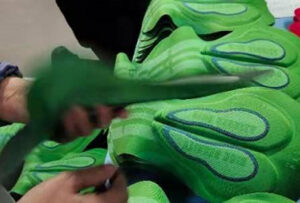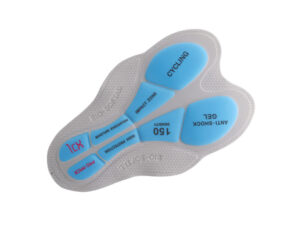Two weeks ago, Meg Fisher became the first — and only — para-cyclist to complete the LeadBoat Challenge.
The 39-year-old from Missoula, Montana was in the saddle for nearly 26 hours to finish the 105-mile Leadville Trail 100 MTB race and the 142-mile SBT GRVL Black course, back-to-back.
While Fisher was one of dozens of riders to tackle the monster weekend of riding, she was the only one to do it with one anatomical leg and one prosthesis. Suffice it to say, I was less interested in profiling Fisher’s LeadBoat bikes — a Cannondale Topstone and Scalpel — because in my opinion, the real equipment standout is her leg.
For the past 20 years, Fisher has been living as a below-the-knee amputee, after a car accident resulted in severe damage to her left ankle. In those two decades, she has medaled at two Olympic games, won 11 paracyling world championships, become a doctor of physical therapy, and more recently, become both an elite athlete and an advocate in the burgeoning gravel scene.
Fisher has achieved all of the above using various iterations of a prosthetic lower left leg, most of which were not ideal for competing at a high level of sport.
That is, until her friend Brian Williams made her current riding leg, a decidedly DIY affair that he stitched together using an intimate knowledge of working with carbon, experience as a bike fitter, and an understanding of his friend’s unique mechanics.
Frankenleg
First, a basic tenant of prosthetics — not all limbs are created equal.
After Fisher’s accident, she was fitted for a “walking leg,” which is to say, a prosthesis for everyday use. However, Fisher had more than “everyday use” on her mind — the former collegiate tennis player had already decided that she was returning to sport, and she very quickly took up triathlon, and then cycling exclusively.
That first leg wasn’t ideal for running — and definitely not for riding — but “you don’t know what you don’t know,” Fisher says.
What Fisher later learned is that the walking leg was designed to “play with compliance and try and return some level of energy. A riding leg, on the other hand, should have zero movement.”
Nevertheless, Fisher muscled her way through life with that prosthesis, becoming increasingly competitive on the bike in the process. She joined the USA Cycling national team and qualified for the 2012 Paralympic Games. However, she was also suffering. She even enrolled in PT school because she wasn’t sure she could carry on as a professional athlete, the pain was that bad.
“Basically I used my walking leg in cycling shoe for seven years,” Fisher says. “A prosthetist said we could make a more specialized foot but it wouldn’t be covered by insurance. He said we could take used parts and try and make something.”
Thus was born “Frankenleg.”
“Frankenleg stopped my leg from hurting so I could go to the Paralympics,” Fisher says. “Before that I thought I’d have to stop riding.”
Fisher’s prosthetist, Dr Brian Rotter, had done a good job making a cycling-specific leg out of used parts, and Fisher used it for many years with fewer problems than she’d had before. She competed in the Paralympics and won world championships.
But again, Fisher didn’t have anything to compare it to.
“I didn’t know it could be any different,” she says. “I’d seen people with cool legs. But I had been like, ‘whatever you give me I’ll take it and walk it and ride and do the best I can.’”
Meanwhile, Fisher was living in Missoula, training and working as a PT, when she befriended Brian Williams — the two worked together at Missoula Bicycle Works.
While Williams never set out to make a prosthesis for Fisher, he also didn’t think his friend needed to settle.
“He was like, ‘no we can do this better,’” Fisher says.
‘He geeked out and went to town.’
Fisher and Williams were friends for years before he had the thought to make her an improved riding prosthesis. In addition to working at the bike shop, Williams was designing and building saddles and geeking out on bike fit and ergonomics. Fisher was riding one of his saddles, so he’d spent some time adjusting her fit.





